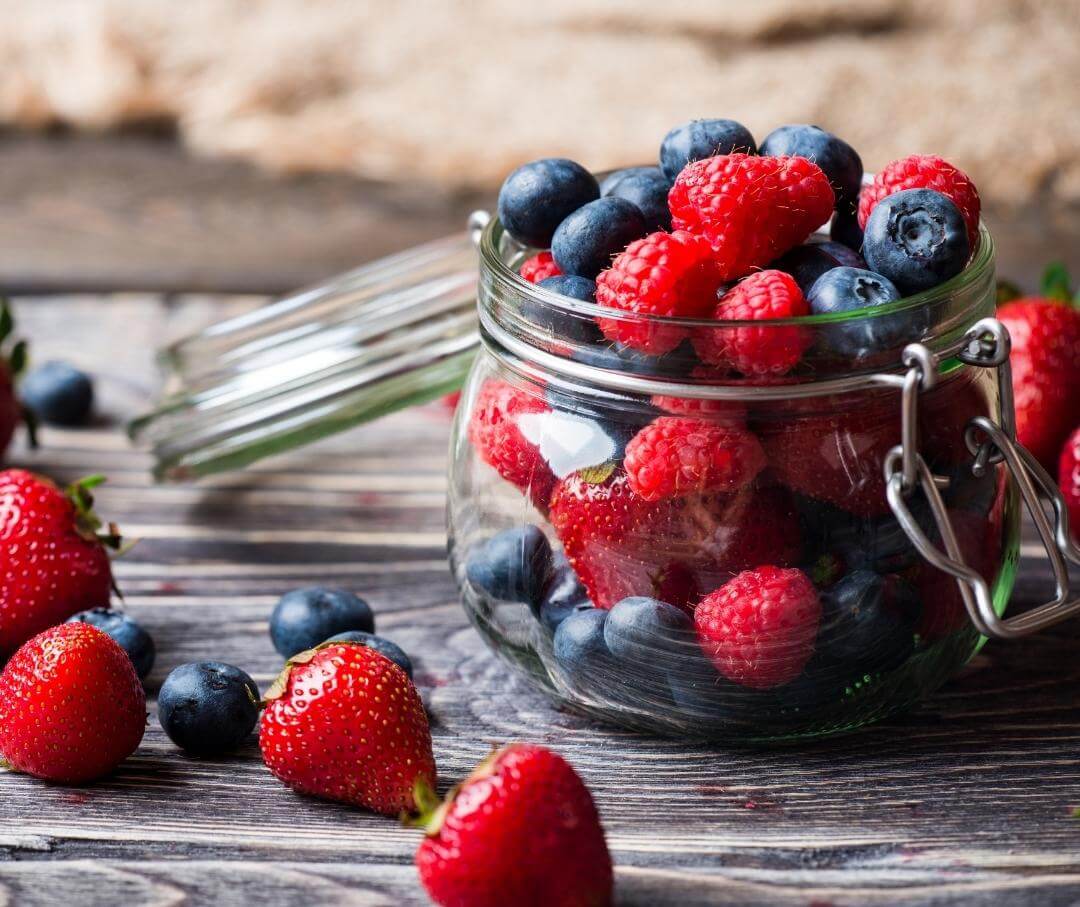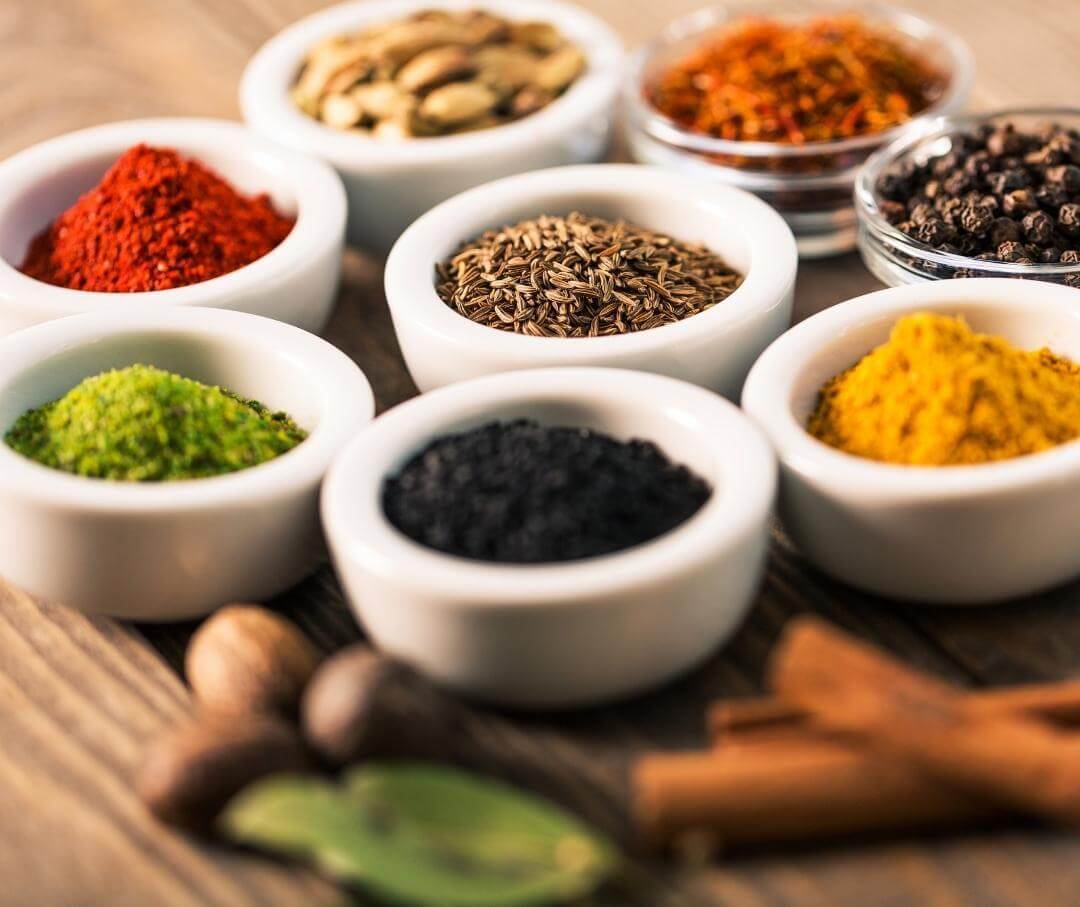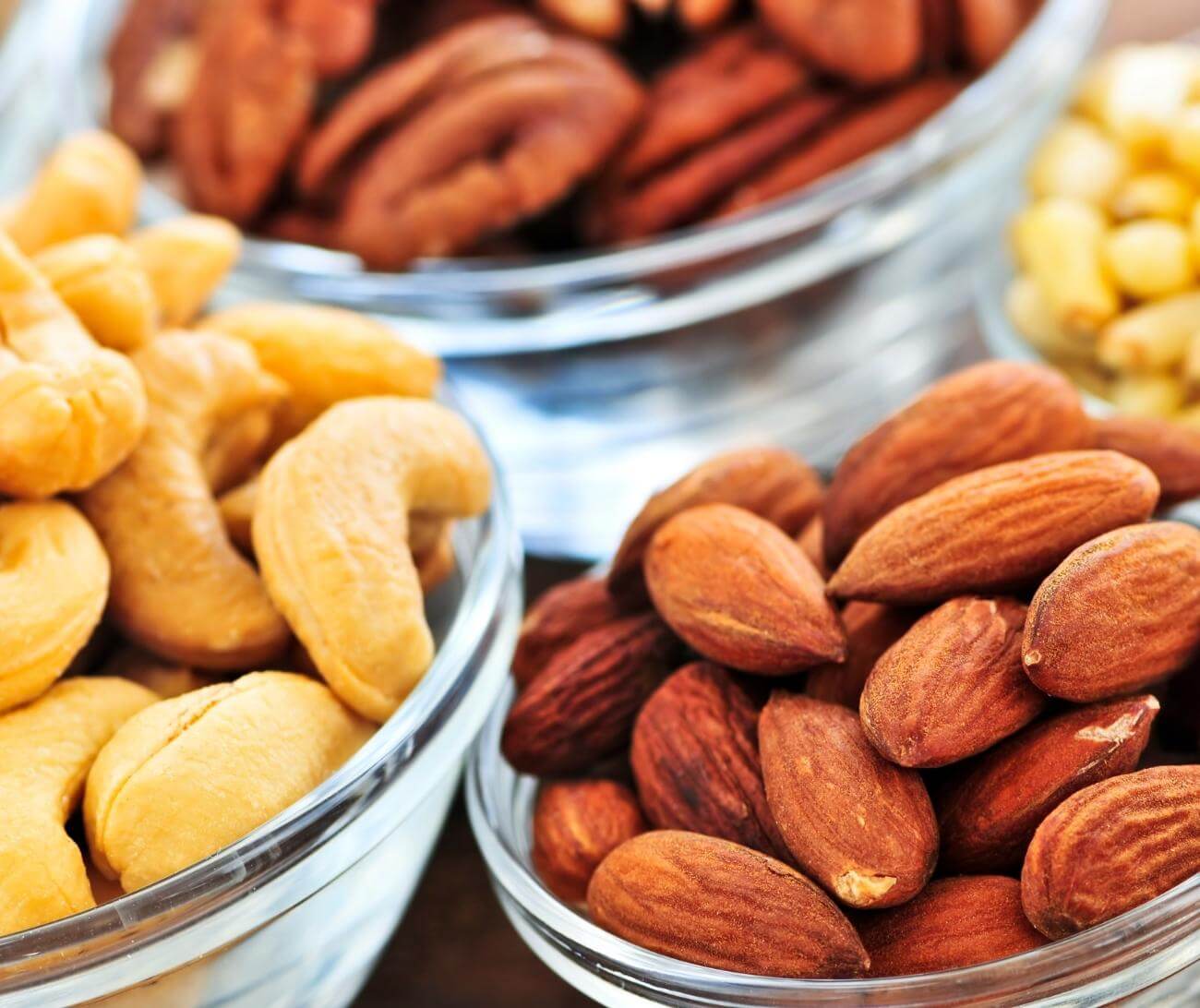Good news for the health-minded: the recommended lifestyle factors to lower your blood sugar and cholesterol levels overlap. Common themes include:
- Increasing fiber intake
- Decreasing consumption of processed and refined foods
- Being more active
This article will cover good target numbers for blood sugar and cholesterol levels, how they’re related, and diet tips you can start using today.
Normal Blood Sugar Levels
Blood sugar levels can fluctuate throughout the day depending on factors like:
- Time of day
- The last time you ate
- Your stress levels
- How recently you exercised
- How well you slept
Checking your blood sugar before eating or drinking is called a fasting reading. A normal fasted blood sugar range in a person without diabetes should be between 70-99 mg/dL.
After eating, blood sugar levels are expected to be higher, but Signos recommends they remain below 120 mg/dL to reduce the amount of sugar that gets stored as fat.
These normal blood sugar levels are guidelines based on the most current research. Your target blood sugar ranges may change based on your health background and overall health goals. A licensed health care provider can provide you with more specific recommendations if you think it is warranted.
Normal Cholesterol Levels
Cholesterol levels in the blood are referred to as lipids. There are different types of cholesterol molecules and each has a different impact on your health.
Low-density lipoprotein (LDL cholesterol) and triglycerides are the less-favorable lipids because they contribute to plaque buildup in your arteries (atherosclerosis) which increases your risk of heart disease.
Optimal LDL levels should be between 100-129 mg/dL, and a fasting triglyceride level should be below 150 mg/dL.1
High-density lipoprotein (HDL) cholesterol molecules contribute to your heart health. Optimal HDL levels should be 60 mg/dL or higher.1
You can only get your cholesterol levels tested through a laboratory blood test. A continuous glucose monitor (CGM) cannot be used to check lipid levels (only blood glucose).
How Blood Sugar Is Linked to Cholesterol
There are a few ways that blood sugar levels can impact cholesterol. Blood sugar is essentially free-floating carbohydrates in your bloodstream, waiting to be used as energy by your muscles. If you eat more carbohydrates than your body needs for fuel, your body will store them as fat to be used later.
The liver converts glucose into triglycerides for energy storage. These fat envelopes are sticky on the outside and can adhere to plaque buildup in the arteries. Higher levels of triglycerides can add to the buildup of plaque and increase the risk of heart attack and stroke2.
Foods that contribute to high blood sugar levels are often refined and ultra-processed. Ultra-processed food can also be deep fried, and high in saturated and trans fats, which are proven to raise LDL levels in some individuals.3
Can Cutting Back on Sugar Reduce Cholesterol?
Reducing your intake of refined sugars is expected to have a positive impact on lowering your cholesterol levels. Complex carbohydrates that are naturally found in nature are rich in fiber, which helps to lower LDL cholesterol.
<p class="pro-tip"><strong>Learn more about </strong> <a href="/blog/slow-digesting-carbs-and-blood-sugar-control">slow-carb foods for blood sugar control</a>.</p>
Can High Cholesterol Cause Diabetes?
High cholesterol is a risk factor for cardiovascular disease, but if there are no other risk factors in your health or family history, high cholesterol alone will not cause diabetes.
However, people who have diabetes have a significantly higher risk of also having high cholesterol.4 Even if the LDL range is normal, individuals with diabetes will always be at an increased risk for heart disease and will need to be vigilant with proactive care for their health.4
<p class="pro-tip"><strong>Learn about </strong> <a href="/blog/metabolic-health">metabolic health and how to improve it</a>.</p>

How Can I Start to Lower Blood Sugar and Cholesterol Today?
Regular exercise and other forms of physical activity are recommended to lower blood sugar and cholesterol. Including a mix of cardio-based workouts and strength training will benefit your health.
If you struggle to find an activity that you consistently enjoy, try branching out and doing something brand new! To make a habit like exercise stick for the long term, it helps if it’s something you enjoy (or at least don’t mind doing).
<p class="pro-tip"><strong>Learn how to </strong> <a href="/blog/full-body-workout">lower a glucose spike in 10 minutes with this full-body workout</a>.</p>
How Much Exercise Is Recommended?
As indicated by the CDC, the current physical activity guidelines suggest a minimum of 150 minutes per week of moderate-intensity activity with an additional two days dedicated to strength-based exercise.5
Although your weekly schedule may dictate when you’re able to exercise, it’s important to consider that every time you eat your blood sugar is impacted. Daily exercise will improve your ability to manage your blood sugar.
If you can organize your schedule to accommodate it, try to exercise for at least 20 minutes every day instead of going to the gym twice a week for an hour and a half.
<p class="pro-tip"><strong>Learn about </strong> <a href="/blog/exercise-before-or-after-breakfast">the effects of exercising before or after breakfast</a>.</p>
{{mid-cta}}
What to Eat for Lower Blood Sugar and Cholesterol
Prioritize adding more high-fiber foods to your diet. They digest slowly and will delay the impact sugar has on your bloodstream. Soluble fiber also helps remove LDL cholesterol from the body.6
High-Fiber Foods:
- Rolled oats, prepared in water and garnished with berries and cinnamon, are one of the best options for breakfast.
- Legumes are a versatile high-fiber food: you can add them to rice, pasta, salads and soups, or blend into a dip.
- Unsalted nuts are a great snack and rich in healthy fats as well as fiber.
- Squash and sweet potato are easy ways to add fiber with a side dish.
- Fresh avocado can be added to smoothies, salads, sandwiches and wraps. Like nuts, avocados are rich in healthy fats and fiber and will help you to feel full.
Try to opt for leaner protein sources, like chicken breast and turkey. Some fatty cuts of animal meat are high in saturated fats, which can increase cholesterol in some people.7
Trim any visible fat off of meat before eating, and opt for heart-healthy fatty fish at least twice a week. Salmon and trout are the most popular options and they can be grilled, baked, or air fried.

Follow the Mediterranean Diet
The Mediterranean diet is the most extensively researched diet in the world. It is known for its health-promoting properties, especially for cardiovascular health and blood glucose management.
The core principles of the diet rely on a high intake of whole foods, plenty of lean protein and fish, and an abundance of vegetables and plant-based proteins. It emphasizes healthy fats such as olive oil, omega-three fatty acids, and lean dairy products.
Mediterranean-inspired snack ideas:
- Roasted and dehydrated chickpeas are crunchy and loaded with fiber. You can make them at home or buy them pre-made with different seasonings.
- Unflavored Greek yogurt dressed with your favorite fruits, nuts, and spices.
- Whole-grain flatbread with avocado, tomato, and red onion, topped with a drizzle of olive oil and balsamic vinegar.
- Your favorite crunchy vegetables and whole-grain crackers with hummus. Add canned salmon on the side which is rich in omega-three fats!
<p class="pro-tip"><strong>Learn about </strong> <a href="/blog/omega-3-fish-oil-weight-loss">omega-3 fish oil and weight loss</a>.</p>
Foods to Avoid if You're Trying to Reduce Blood Sugar and Cholesterol
You might be surprised to learn that the number one thing you should stay away from is sugar-sweetened beverages. These drinks are loaded with refined sugar and contain virtually no fiber, so the glucose will rapidly enter your bloodstream.
A meta-analysis completed in 2010 showed that people who consumed 1-2 cans of pop per day had a 26% greater chance of gaining weight, developing diabetes, and metabolic syndrome.8 Limit your intake of these types of beverages to improve your metabolic health.
Other ultra-processed foods that should be limited include anything deep-fried, whether sweet or savory.9 Although fried foods are undeniably delicious, they are loaded with added sugars, salt, and saturated fats which will make it more difficult to achieve healthy blood sugar and cholesterol levels.8
<p class="pro-tip"><strong>Learn more about </strong> <a href="/blog/foods-to-avoid-for-weight-loss">foods to avoid for weight loss</a>.</p>
How Long Does it Take to Lower Cholesterol and Blood Sugar?
Your blood sugar levels can start to decline within a few days. Triglycerides change rapidly and will start to decline after a few hours.10 Sustainable, long-term results are achieved through adherence to diet and lifestyle changes.
LDL and HDL cholesterol take a bit longer to see any changes. The earliest recommended time to repeat your bloodwork is three months. This gives adequate time for your labs to reflect a true change.11 Most people who are trying to improve their cholesterol will complete bloodwork twice a year or annually, whatever is recommended by their physician.
Final Takeaways
Small everyday changes can contribute to big results down the road. Improving your diet and physical activity can help you manage your blood sugar and cholesterol.
Prioritize adding fiber to your diet through different food sources. You can increase your fiber by adding whole grains, nuts and seeds, fruits and vegetables, and different types of beans and legumes.
<p class="pro-tip"><strong>Learn about </strong> <a href="/blog/high-fiber-low-carb-foods">the best high-fiber, low-carb foods for blood sugar</a>.</p>
Regular exercise is also important to manage your numbers. Including daily movement will have the most impact on your daily numbers and is also a great way to support your mental health. When you feel positive and excited about your plan, you are more likely to remain consistent and hit your goals.
<p class="pro-tip"><strong>Keep reading about </strong> <a href="/blog/markers-of-metabolic-health">the 6 markers metabolic health</a>.</p>
- Item 1
- Item 2
- item 3
Topics discussed in this article:
References
- Lee Y, Siddiqui WJ. Cholesterol Levels. [Updated 2021 Jul 26]. In: StatPearls [Internet]. Treasure Island (FL): StatPearls Publishing; 2022 Jan-. Available from: https://www.ncbi.nlm.nih.gov/books/NBK542294/
- American Heart Association. (2022, July 20). What is Atherosclerosis? Www.Heart.Org. https://www.heart.org/en/health-topics/cholesterol/about-cholesterol/atherosclerosis
- Grundy, S. M. (2016). Does Dietary Cholesterol Matter? Current Atherosclerosis Reports, 18(11). https://doi.org/10.1007/s11883-016-0615-0
- Damaskos, C., Garmpis, N., Kollia, P., Mitsiopoulos, G., Barlampa, D., Drosos, A., Patsouras, A., Gravvanis, N., Antoniou, V., Litos, A., & Diamantis, E. (2021). Assessing Cardiovascular Risk in Patients with Diabetes: An Update. Current Cardiology Reviews, 16(4), 266–274. https://doi.org/10.2174/1573403x15666191111123622
- Move More; Sit Less. (2022, June 2). Centers for Disease Control and Prevention. Retrieved July 2022, from https://www.cdc.gov/physicalactivity/basics/adults/index.htm#:%7E:text=Each%20week%20adults%20need%20150,Physical%20Activity%20Guidelines%20for%20Americans.
- Surampudi, P., Enkhmaa, B., Anuurad, E., & Berglund, L. (2016). Lipid Lowering with Soluble Dietary Fiber. Current Atherosclerosis Reports, 18(12). https://doi.org/10.1007/s11883-016-0624-z
- Clifton, P. M. (2019). Diet, exercise and weight loss and dyslipidaemia. Pathology, 51(2), 222–226. https://doi.org/10.1016/j.pathol.2018.10.013
- Malik, V. S., Popkin, B. M., Bray, G. A., Després, J. P., Willett, W. C., & Hu, F. B. (2010). Sugar-Sweetened Beverages and Risk of Metabolic Syndrome and Type 2 Diabetes. Diabetes Care, 33(11), 2477–2483. https://doi.org/10.2337/dc10-1079
- Monteiro, C. A., Cannon, G., Levy, R. B., Moubarac, J. C., Louzada, M. L., Rauber, F., Khandpur, N., Cediel, G., Neri, D., Martinez-Steele, E., Baraldi, L. G., & Jaime, P. C. (2019). Ultra-processed foods: what they are and how to identify them. Public Health Nutrition, 22(5), 936–941. https://doi.org/10.1017/s1368980018003762
- Samson, C. E., Galia, A. L. B., Llave, K. I. C., Zacarias, M. B., & Mercado-Asis, L. B. (2012). Postprandial Peaking and Plateauing of Triglycerides and VLDL in Patients with Underlying Cardiovascular Diseases Despite Treatment. International Journal of Endocrinology and Metabolism, 10(4), 587–593. https://doi.org/10.5812/ijem.4783
- US Department of Health And Human Services (2005). Your Guide To Lowering Cholesterol With TLC. Retrieved from: https://www.nhlbi.nih.gov/files/docs/public/heart/chol_tlc.pdf































